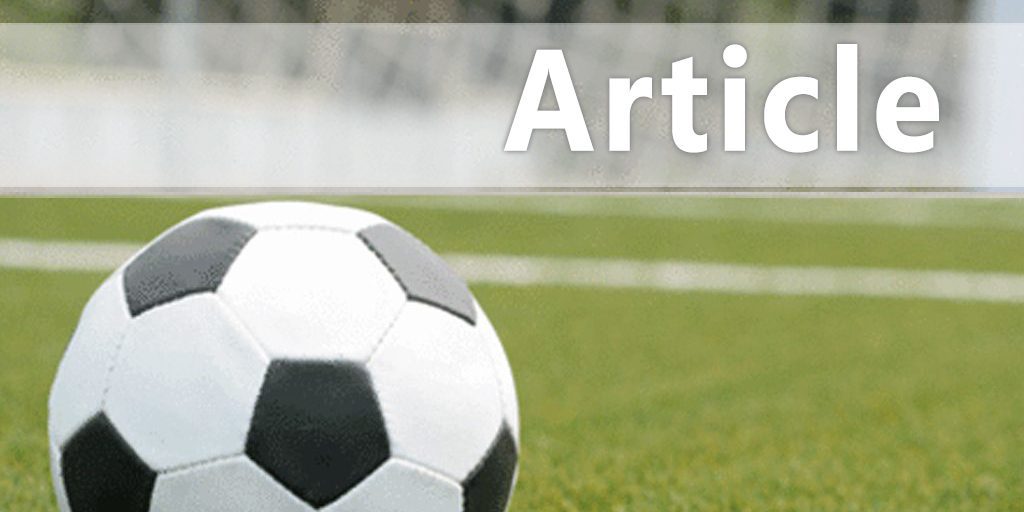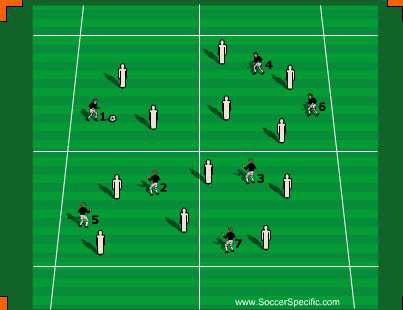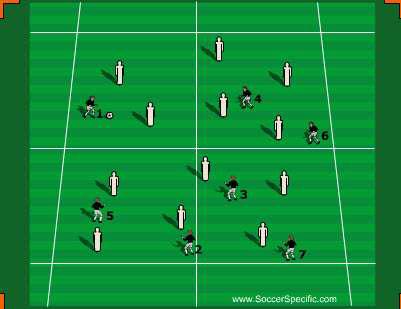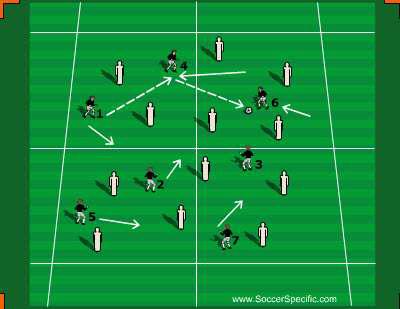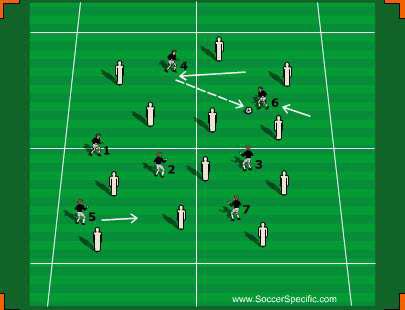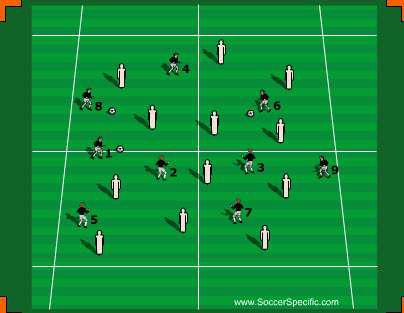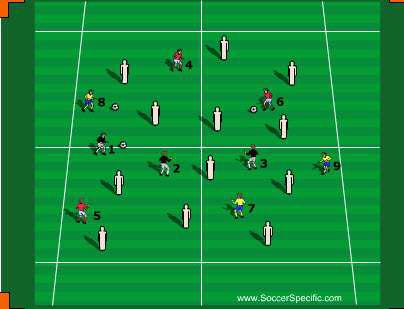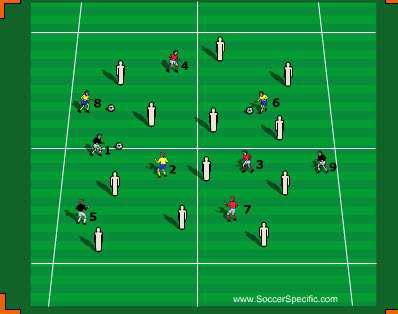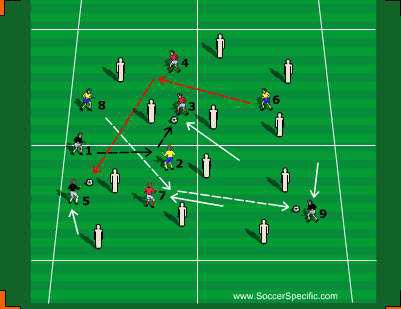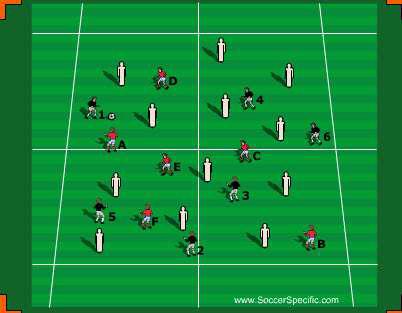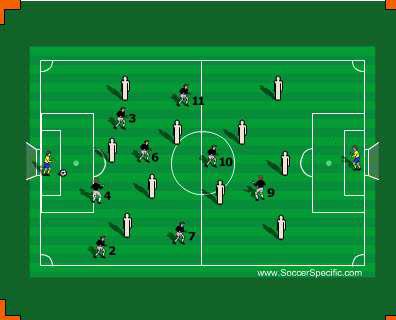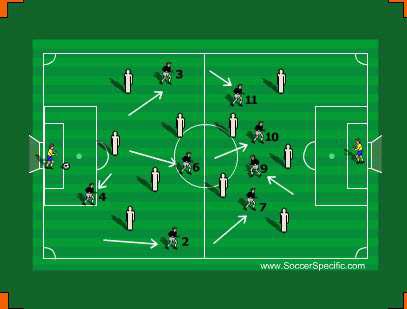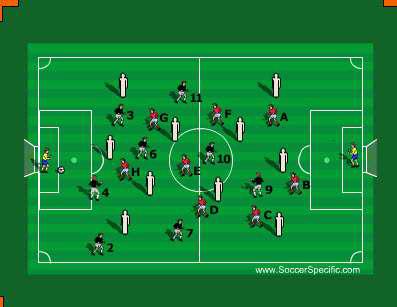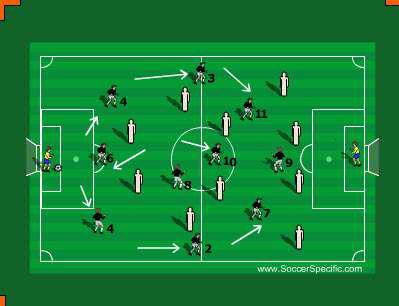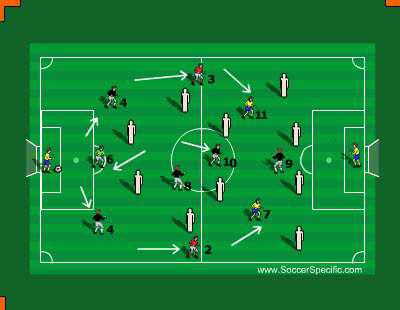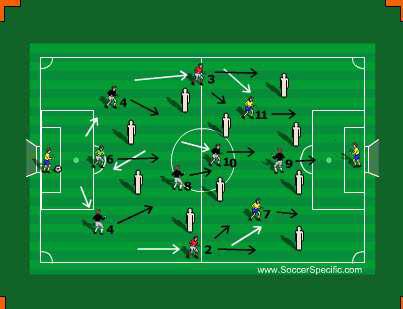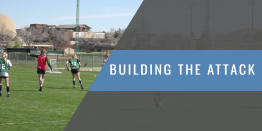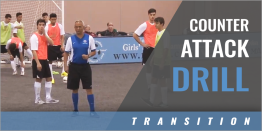|
Using Mannequins in Training
OBJECTIVE: To improve movement off the ball by providing mannequins to act as opponents to fill important space 1. A None directional training practice. 2. Mannequins represent opponents on the field. They fill important spaces so the players need to pass and move around and between them. This ensures players move off the ball to help the player on the ball have as many options as possible for a pass. The goal of the players is to find as much space as they can between the mannequins to give themselves as much space as possible to play in. 3. Every now and again stop the practice and see where the players are positioned. Are they in free space? Are they too close to a mannequin and hence in a game situation not available for a pass? If they are then ASK THE PLAYERS to SHOW you a better position to be in. 4. Possible problems here are the positioning of players behind opponents so the player on the ball cannot see them to pass to. 5. Develop: a) Restrict the number of touches on the ball to 3 touches, two touches then one touch; if it is on to do so. To enable one touch to be possible movement off the ball has to be intelligent, fast and into space to help the passer play one touch. 6. Coaching Points: 1. An exaggerated situation but this shows what happens when players do not move to space to help the player on the ball; and do not open up the angle for a pass, instead standing behind an opponent and not being free to receive. How many times do you see this? 2. To defeat this problem; the player on the ball can pass to a space hoping that this will force the receiver to move to that space to receive the ball. Then the weight; timing and accuracy of the pass has to be particularly good; but this is not ideal. 3. Whilst players can still be successful with later movement off the ball of supporting players; if the player on the ball has time on it to take more touches; it is always better to provide options of a pass as early as possible to increase speed of play and give opponents less time to work out their movements. 1. Increasing the number of balls being used to two, then three. 2. More footballs means more decisions to make as to which ball to support, this should improve peripheral vision. 1. (1) passes to (4) who has moved between the mannequins to the biggest and most open space possible to receive. (6) Moves between the mannequins also to receive the next pass. Show the difference between the timing of (6)'s move and how it will effect (4) in terms of potential possession and number of touches on the ball. 2. Show when (4) receives the pass and looks for the next pass (6) then moves and then show the difference when (6) moves as the ball is being passed to *(4) or even when (1) shapes up to pass depending on the distance (6) has to move to get free to receive. 3. Therefore; (6) should be moving as the ball is being passed to (4); or even before, so the ball can be moved more quickly. The other players also are looking to find the best space to be in to offer options for the next pass. 1. Here we show the end initial movement of the other players to support (6) and offer him as many options as possible. Each player has attempted to find the biggest and best space possible to receive the pass.. 1. Bring in more footballs to increase the intensity of the practice and offer more decisions to make on passing and support and movement off the ball to receive. 2. With more balls the players now have to avoid and keep free from the mannequins but also the other players. PASSING IN THREES 1. Now we have three groups of three passing and moving. 1, 2 and 3, 4, 5 and 6, and 7, 8 and 9. Emphasize the movement off the ball especially by the third player who should be moving to receive based on the ball being in possession with the first player and ready to pass to the second player. 2. Equate this to 'THIRD MAN RUNS' off the ball. 3. Watch Barcelona and how they play, the players are always moving off the ball to find space and to get between opponents to receive, plus they do it "at least" two moves ahead. DIFFERENT COLORS IN EACH THREE 1. Color identification now becomes a factor. Not only are they looking for their teammate but they are looking for a different color to pass to. These changes are all designed to challenge the players quick thinking, passing and movement off the ball. 1. Here showing possible passing routes with each group of three players also showing how they get free and into as much space as possible, based on the positions of the mannequins who act as opponents filling spaces.
1. Have players passing in two teams to begin as a warm up, with a ball each team, then two and three balls each team. Then they pass to opposite colors only. 2. Now play a 6 v 6 (or any number you like) and make it a possession game. Mannequins make it more difficult by filling spaces so players have to play around them as well as their opponents. This should improve them playing in tight situations. 3. Use a 2 player overload if required initially until they get really good; then make it equal numbers each team, you dictate this based on the ability of your players. Of course change the numbers of touches on the ball decreasing the number as they become proficient to increase the difficulty.
1. Now we show our team shape, in this case in a team of 9; with mannequins spaced according to the opponent's possible team shape. 2. Players need to pass and move through the team to get a shot on goal at the other end; once this is achieved they go back to a defensive team shape and start again from the keeper. 3. The coach can dictate when and where the ball goes initially with commands to play forward or back, right or left so ALL players on the team have to be alert through this condition of play. 1. The focus is again passing and movement off the ball to receive with as many players as possible offering an option of a pass for the player on the ball. 2. Here we show potential positioning of players in the biggest spaces they can find between the mannequins. 3. More space means more time to play on the ball so the player has the choice to play quickly or not; also depending on the individual situation presented; and often dictated to by the support positions of his teammates. 4. Develop: Have two teams playing through each other avoiding each other and also avoiding the mannequins. This is now a big challenge to each player on the field where there will be less space to play in and their peripheral vision will really be tested to its fullest.
1. Try an overload first of all maybe a 9 v 4 building it up to a full game. This is a big challenge meaning fewer spaces to play in and forcing more movement off the ball to support each other.
1. Now an 11. Vary the number of mannequins you use the more you use the fewer spaces you have to play in the bigger the challenge. 1. Emphasizing potential changes in shape of the team. All players here have gotten free of the opponent mannequins and are positioning in the spaces available between and around them.
1. Playing against a 4-4-2 and finding spaces between and around the players (mannequins). 2. Develop into a full scale 11 v 11 game eventually building it up as you go to increase the difficulty, and then take out the mannequins and see if playing in restricted space (with the mannequins) has helped the players when they have more space without them on the field to play in. 1. Initial movements then next potential movements attacking the spaces; based on the positioning of the mannequins.
|
|
|
